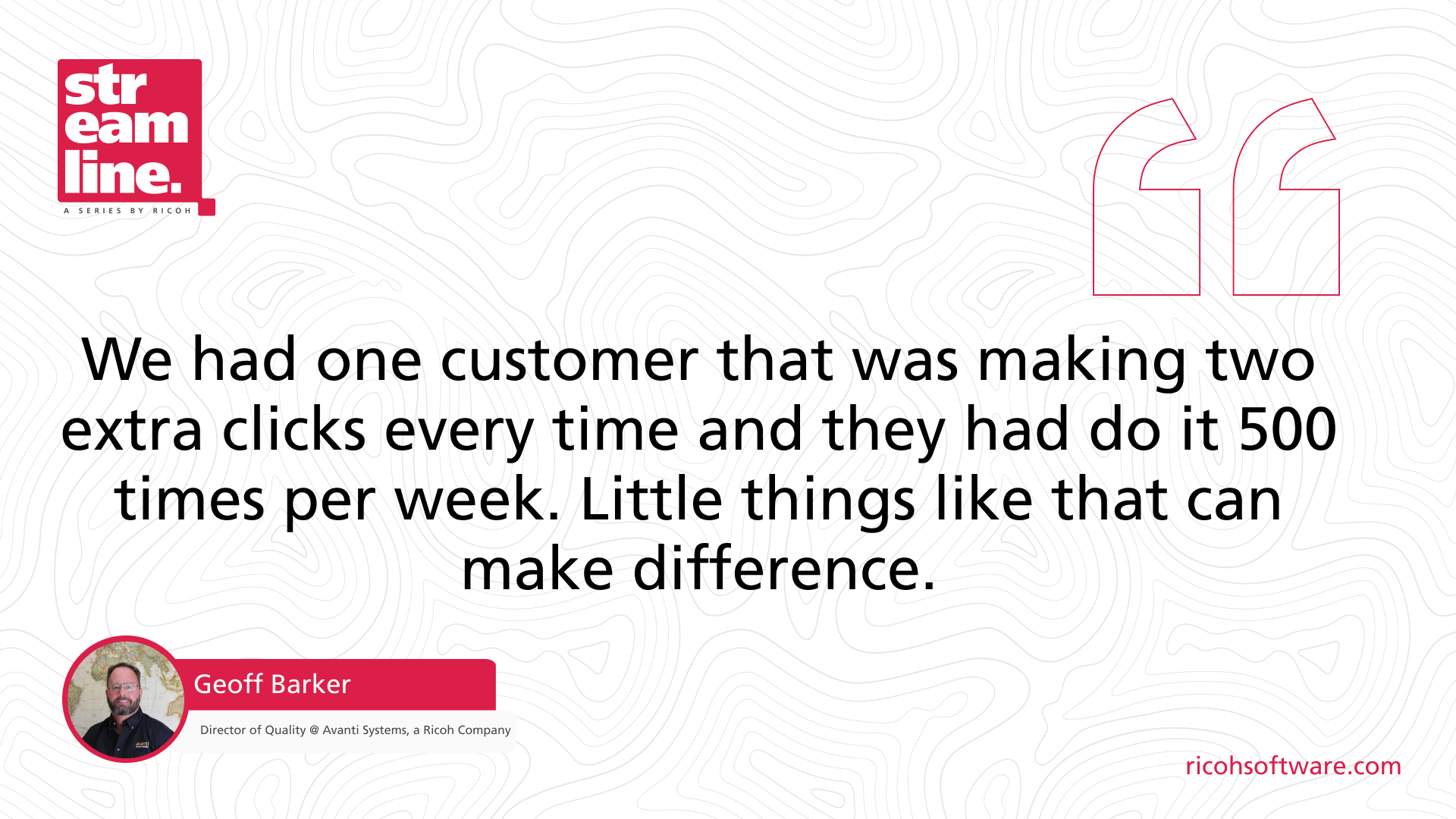Navigating the go-live process during print MIS implementations can take time for any print business. After all, it is not a process that businesses go through often. This critical transition phase is often the defining moment between a successful deployment and a challenging start.
Understanding this process is essential for ensuring operational efficiency, employee confidence, and long-term satisfaction with the new system. Ricoh, with its expertise in the print industry, plays a pivotal role in guiding businesses through this complex phase.
In this article, we delve into the intricacies of the go-live process. We uncover the common pitfalls and learn how to overcome them with strategic approaches. You will discover Ricoh's insights on:
- Common challenges in the go-live phase and how to address them.
- Strategies for effective employee training and engagement.
- The significance of customer feedback in refining the go-live process.
- The long-term impact of a well-executed go-live.
Common Pitfalls in the Go-Live Phase for Print MIS Implementations
In the journey of implementing print MIS, businesses often face a set of common challenges during the go-live phase. One significant hurdle is the underestimation of the validation process. It's not just about learning how to use the new system but ensuring it fits seamlessly into your existing workflow. This phase requires rigorous testing and real-world simulation, which can be more time-consuming and complex than you anticipate.
Another common pitfall is insufficient training. The transition to a new MIS system is a substantial change. Employees need thorough, practical training to adapt effectively. Yet, many businesses rush this stage or need to provide more hands-on learning opportunities. This oversight can lead to a lack of confidence and competence in using the new system, hindering its successful adoption.
Furthermore, businesses often need to pay more attention to the need for a detailed go-live assessment. This assessment is not just a formality; it's a critical checkpoint to ensure that all systems and processes are ready for the transition. Without it, companies risk encountering unexpected issues post-go-live, which can cause significant disruptions.
Finally, failing to engage all team members in the go-live process can be detrimental. A successful implementation requires buy-in and active participation from every department affected by the new MIS. Overlooking this aspect can lead to resistance, confusion, and inefficiency.
Overcome Challenges in Navigating the Go-Live Process
Navigating the go-live process in print MIS implementations is a critical phase, and Ricoh excels in guiding clients through it with a strategic approach. Here's how we at Ricoh help our clients overcome typical challenges:
Customized Go-Live Assessments: Ricoh understands that each business is unique. Our team conducts detailed assessments tailor-made for each client. This approach ensures identifying specific needs and potential issues unique to each business. It leads further to a well-planned go-live strategy.
In-Depth Validation Process: A robust validation phase is key. Ricoh goes beyond basic software testing. We simulate real-world scenarios. This way, we ensure that the system integrates seamlessly into your current workflow and operations. This step is crucial for identifying and mitigating potential issues before they impact the business.
Client-Centric Strategy:
- Active Collaboration: Ricoh works closely with its clients, involving them in every step. This partnership ensures that the system aligns with the client's operational needs and preferences.
- Effective Communication: Clear and continuous communication is a priority. Ricoh keeps clients informed and prepared, facilitating a smoother transition.
The Role of Employee Training and Engagement During Go-Live
In the go-live phase of print MIS implementation, the role of employee training and engagement is critical. Ricoh's approach emphasizes this aspect, ensuring a smooth transition. The focus is on comprehensive training programs that extend beyond basic software functionality. Ricoh's sessions are designed to instill confidence and competence. We strive to enable employees to apply new skills effectively in their daily tasks.
Active involvement of employees in the validation phase is another key strategy. This engagement allows employees to familiarize themselves with the system in a real-world context. That enables them to identify and address practical challenges. Such involvement is empowering and crucial for refining the system based on direct user feedback.
Continuous feedback is integral to our methodology. This open communication channel during and after the training phase helps address any emerging challenges or concerns swiftly. The goal is to facilitate a comfortable and confident transition for all employees.
Moreover, Ricoh provides extensive support and resources post-training. This includes accessible guides, help desks, and additional training sessions as needed. Such resources ensure ongoing support, helping employees adapt fully to the new system.

Lessons Learned from Customer Feedback
We always learn from our clients' feedback. One notable example involves a client struggling with the validation phase. They were following the standard process. Still, they felt they weren't making significant progress in identifying potential system issues. They tried an innovative approach: running the new system parallel to their existing one.
This strategy proved effective, as it allowed the client to directly compare processes and promptly identify discrepancies and areas needing refinement. The parallel run accelerated the validation process and provided deeper insights into the system's functionality in a live environment.
Another instance illustrated the importance of thorough, scenario-based training. A client faced challenges in adapting to new workflows. Ricoh provided support by enhancing their training modules to include more real-life scenarios. This way, we were able to ensure that users could handle a variety of situations post-go-live. Our approach improved user competence and increased confidence in managing diverse job requirements.
The Impact of a Well-Executed Go-Live on Print Businesses
The impact of a well-executed go-live process extends far beyond the initial transition phase. A successful go-live has profound effects on the operational efficiency and long-term satisfaction of print businesses. It can:
- Reduce Downtime: A successful go-live significantly minimizes operational interruptions. This efficiency is crucial in an industry where time is of the essence. Ricoh's thorough planning and execution ensure that businesses benefit from their new system with minimal disruption.
- Increase User Confidence and Adoption: Effective training and a smooth transition boost employee confidence. This leads to better system utilization, enhancing productivity and customer service. Ricoh’s focus on comprehensive training and support plays a key role here.
- Strengthen Client Relationships: A positive go-live experience builds trust and reliability in the client-provider relationship. This trust often leads to ongoing partnerships and referrals, solidifying Ricoh’s reputation as a trusted print MIS provider.
- Provide Continuous Improvement: Insights from successful go-lives provide critical feedback for ongoing process refinement. Ricoh leverages these learnings to enhance its implementation strategies. It benefits future projects and contributes to the evolution of the print industry.

Navigate the Go-Live Process to Successful Implementation
Navigating the go-live process in print MIS implementations is a complex journey. However, Ricoh's expert approach turns these challenges into opportunities for growth and efficiency. Throughout this article, we have seen how our customized assessments, in-depth validation processes, and client-centric strategies significantly reduce the struggles of this phase. Ricoh ensures each client's unique needs are met by focusing on tailored solutions, leading to a smoother transition.
The role of employee training and engagement is another cornerstone of Ricoh's strategy. It fosters an environment of confidence and competence. This proactive approach extends into customer feedback, where Ricoh continuously adapts and improves, driven by real-world experiences and challenges clients face.
The overarching impact of a well-executed go-live cannot be overstated. From reducing operational downtime to strengthening client-provider relationships and encouraging continuous improvement, Ricoh's commitment to excellence resonates through every stage of the process.
At Ricoh, we are dedicated to guiding and supporting businesses through their print MIS implementation journey. If you're looking for a partner to help navigate the complexities of a go-live process, look no further. Contact us for more information, and let's embark on this journey together, ensuring your transition is seamless and successful.


